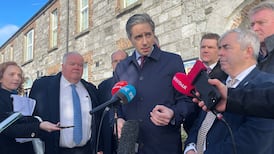Forty years is a long time; a generation. Over the last 40 years Ireland has undergone massive change to the point that the Ireland of 1985 bares little resemblance to the Ireland of today.
Back then our economy was struggling, high unemployment drove many of our people to foreign shores, our resources were limited and national debt was massively inflated. We were heavily reliant on the agriculture sector, with limited advanced industry to speak of.
Our population was a third smaller than it is today and, at 73, life-expectancy was 10 years below where it now stands. There was less than 10km of motorway compared to 1,000km today and about 22 per cent of school leavers went on to university. A massive difference.
There is little reason, then, to believe that 40 years from now, we will not again have undergone significant change; even more so owing to the speed and complexity of the technological advances we are making.
READ MORE
As we look toward the next 40 years, we already know the challenges of accelerating climate change, decarbonisation of the global economy, shifts in global trade and an ageing population await. The pace and scale of change has rarely been greater. Now is the time to plan for this.
That is why over the last 18 months the Department of Finance has undertaken research to look at how various structural and demographic trends may affect Ireland across the next four decades.
This work was recommended by the Commission on Taxation and Welfare, which pointed to the need to develop longer-term planning and to examine our future public finance to better prepare for what may lie ahead.
[ Paschal Donohoe reviews The World’s Worst Bet: How The Globalisation Gamble Went Wrong ]
The report, Future Forty, which I will publish on Tuesday, focuses on seven key policy areas: climate change and the green transition, deglobalisation, demographics, digitalisation, European Union enlargement, health and housing. The result is more than 2,000 potential economic and fiscal scenarios or outcomes for Ireland.
These vary from highly positive, where the economy maintains strong growth, to more negative outcomes, where the economy stagnates; where the deficit in 2065 is projected to be as high as -21.8 per cent of GNI* (modified gross national income), or as low as -0.8 per cent, and GNI* ranges from between €421bn and €677bn in 2020 prices.
A “central scenario” is developed. It envisages an economy that continues to expand, albeit at a much slower pace than in the past. Coupled with rising costs for public services due to an ageing population, this puts significant pressures on the public finances in the future. These pressures will be further exacerbated by the budgetary costs associated with climate change and extreme weather, the need to finance the digital transition and the changing geopolitical landscape.
The central scenario projects a period of economic growth across these years and, while living standards are expected to improve, GNI* per capita – a metric for measuring this – is expected to grow at a slower rate than in the past. To see this, we just have to look at other advanced economies in Europe, where growth is much slower in part due to falling working-age populations.
Total voted expenditure, a proxy for the size of the State, is projected to increase from 33 per cent of GNI* in 2025, to 39.2 per cent in 2065, at which point age-related expenditure, that is, healthcare, long-term care and pensions, will account for almost half of state expenditure. This will result in a bigger deficit higher and national debt.
Where the workforce is concerned, in 2025 there are 116 people in the labour market in Ireland for every 100 not working. By 2065, that figure will amount to 98 for every 100 not working. That all adds up to a more expensive future and greater pressure to make ends meet.
What is certain, however, is that, as I have said previously, continued skilled inward migration will be vital to maintain growth in the labour force. Our openness will continue to be a great source of strength and a competitive advantage. We need to manage this well.
Future Forty is not a crystal ball. It is a tool and a guide. The coming decade offers a window of opportunity to confront structural weaknesses in our economy and to continue to strategically invest in a way that enhances our resilience while laying the groundwork for a more sustainable Ireland.
Our ability to plan and to prepare for what lies ahead will ensure that Ireland is in a stronger position to anticipate challenges and make the best of the opportunities that present. Not merely to react to crises as they unfold.
The Irish economy has shown remarkable resilience in recent years: rebounding from the global financial crisis and dealing with Brexit, the Covid-19 pandemic and the Russian invasion of Ukraine, the list goes on.
The decisions we made across the last 40 years – to move away from protectionism and attract foreign investment, to provide free secondary education, to expand tertiary education and research and to build a transport network to better connect our island – have all shaped the Ireland we know today.
Similarly, the choices we make in the years ahead will determine how well we can withstand future shocks and how fairly and sustainably we can share the benefits of economic progress.
In this evolving global context, we must take the time to think and plan carefully for the longer-term, so we can act strategically, build resilience for the generations to come and build a prosperous and equitable society in the Ireland of the future.
Paschal Donohoe is Minister for Finance










